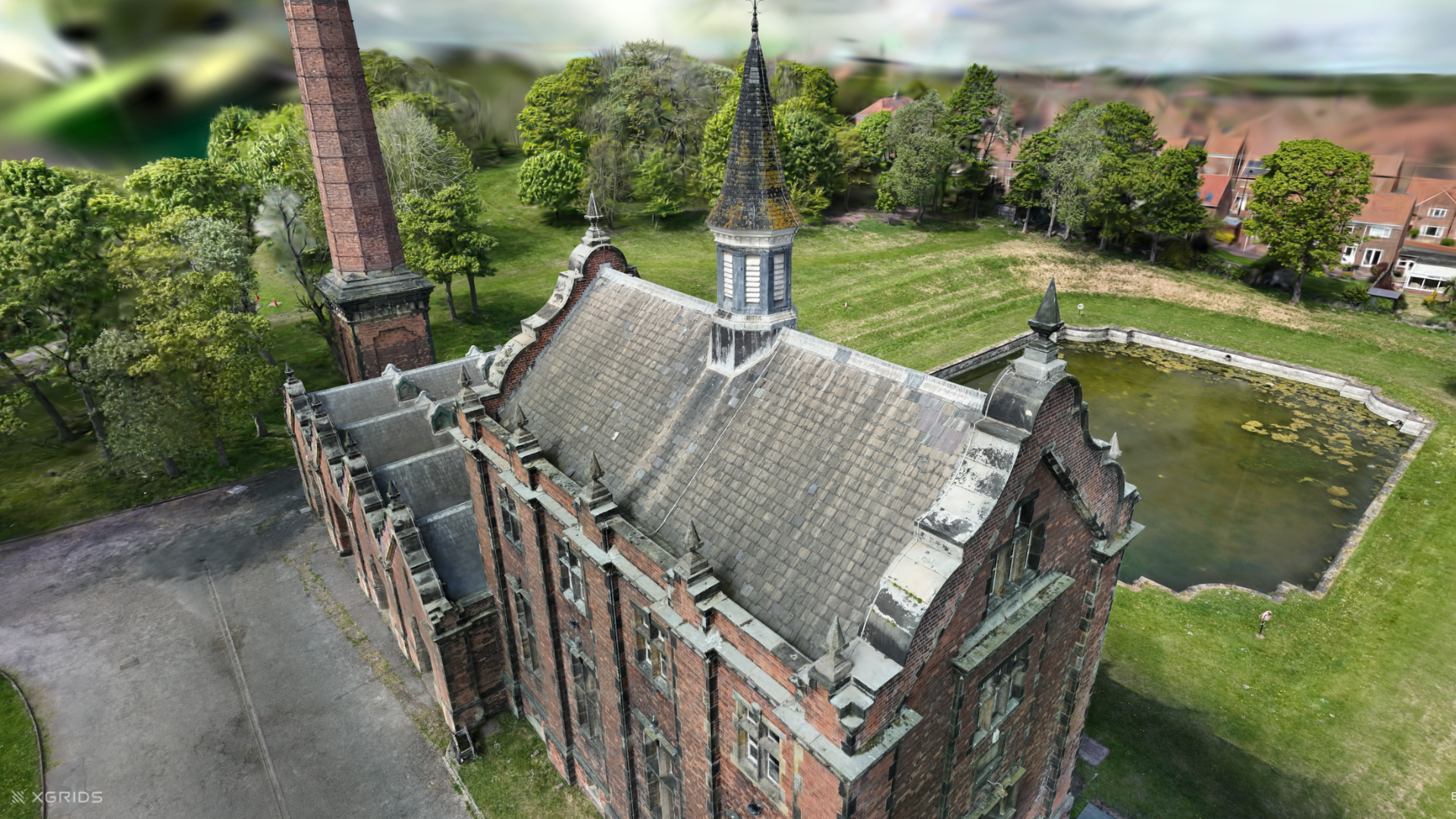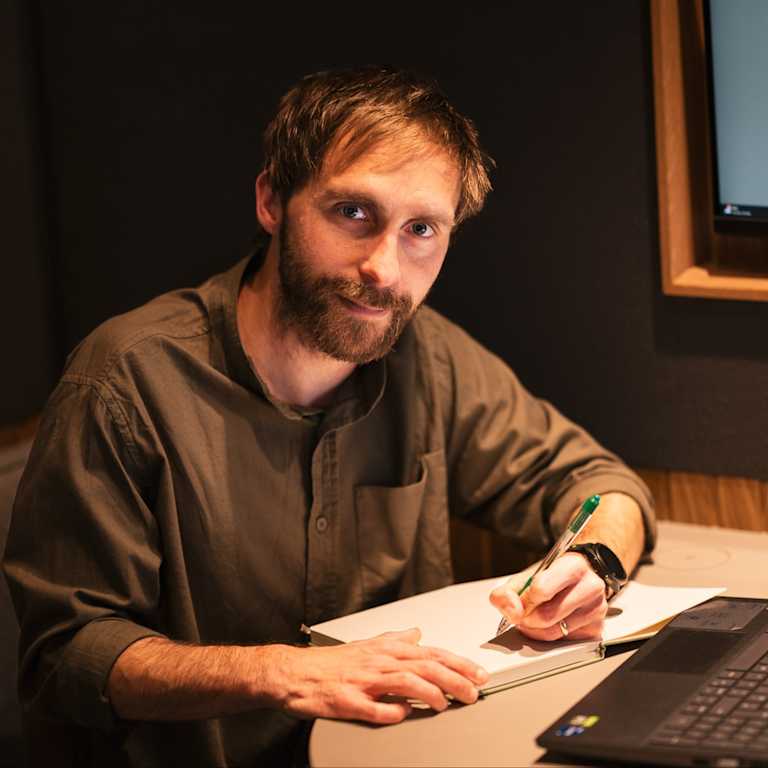
Case Studies
Drones for Gaussian Splatting
Explore the benefits and see dataset examples of using drones for Gaussian Splatting (3DGS) to create high-fidelity reality capture models.
Find out how drones can be used for Gaussian Splatting (3DGS) - with dataset examples;
3DGS is a real-time rendering technique that creates high-fidelity reality-capture models;
Drones offer an efficient way of capturing data for 3DGS and enable full 360° scene capture;
Solutions such as XGRIDS' Aerial-Ground Map Fusion allow you to combine data from handheld scans and drone surveys into one Gaussian Splat model;
heliguy™ can support your reality capture workflows, offering supply, support, consultancy, and training on drones and handheld scanners, as well as help you with data processing.
In the fast-evolving world of 3D capture and immersive digital content, Gaussian Splatting (3DGS) has emerged as a cutting-edge technique for creating high-fidelity reality capture models.
Paired with the aerial prowess of drones, this technology is being supercharged, bringing unprecedented levels of detail, efficiency, and scalability to industries such as surveying, architecture, film, real estate, tourism, and VR/AR.
For instance, this Gaussian Splat model of a ship unloader was created with data captured with the DJI Matrice 4E, using its Smart 3D Capture mode for automated surveying. The data was fed into Postshot to create the 3DGS model.
This blog explores what 3DGS is, its advantages, and how drones elevate it to new heights.
heliguy™ has an in-house survey team to help you integrate drones and 3DGS - as well as handheld scanners for reality capture - into your workflows. We also offer data processing. For more details, contact us.
What is 3D Gaussian Splatting (3DGS)?
Gaussian Splatting is a novel real-time rendering technique that represents a 3D scene using a cloud of 3D Gaussian functions instead of traditional polygon meshes or voxels.
These Gaussians are optimised through neural networks to reflect the visual appearance and depth of a scene as captured from multiple viewpoints.
Key benefits of 3DGS
Using 3DGS brings many benefits. These include:
High fidelity and realism: Captures intricate lighting, depth, and surface properties, enabling photorealistic reconstructions.
Efficient rendering: Unlike volumetric methods or NeRFs (Neural Radiance Fields), Gaussian Splatting offers real-time rendering performance while maintaining visual richness.
No explicit mesh requirement: Avoids the complexity of mesh modeling and simplifies the reconstruction process.
Versatile use cases: From digital twins to VFX to immersive walkthroughs, 3DGS adapts across many domains.
This video of Brizlee Tower in Northumberland, UK, shows the visual detail that can be obtained through Gaussian Splatting with a drone - which brings us to our next topic.
Benefits of drones for 3DGS
There are numerous advantages of using drones to capture data for Gaussian Splatting. These include:
Aerial perspective and coverage: Drones provide access to elevated and otherwise hard-to-reach angles. Drones efficiently capture wide-angle exterior data for 3DGS, and when paired with handheld scans, can help build complete 360° reconstructions.
Improved data consistency: Capturing data from a consistent altitude and trajectory improves the alignment and reconstruction process in Gaussian Splatting.
Automated data capture: Drones can follow pre-set mission plans, enabling you to conduct automated surveys.
Faster and safer scanning: Drones automate what would otherwise be time-consuming or risky.
High-resolution sensors and payloads: Modern drones support high-quality RGB cameras. Cameras such as the DJI Matrice 4E can capture imagery at multiple angles during a single flight, greatly improving the fidelity of Splats.
Scalable: Drones enable you to conduct repeatable missions with ease, ideal for applications such as progress tracking.
Aerial-Ground Map Fusion: 3DGS with drone and handheld scan data
Thanks to software such as XGRIDS Lixel CyberColor, it is possible to merge drone data with handheld scanner data in one unified Gaussian Splat.
For instance, this highly-detailed, colour-accurate reconstruction of the inside and outside of Ryhope Engines Museum consists of ground information collected with the XGRIDS LixelKity K1 mobile laser scanner, along with DJI Matrice 4E aerial mapping data.
It was created using Lixel CyberColor's Aerial-Ground Map Fusion feature. This is a powerful tool for reality capture, bolstering 3DGS outputs and enabling users to:
Improve spatial accuracy.
Fill blind spots and better capture roof-top details to create more complete 3D reconstructions.
Enhance realism.
Capture the externals and internals of an asset and merge them into one model.
Accelerate workflows and provide greater insights.
Capture data in complex environments.
It is worth noting that Aerial-Ground Map Fusion is a powerful tool, but it does require serious hardware to run reliably.
XGRIDS recommends a 16-core processor like the AMD Ryzen 9 9950X, an RTX 3090 or better (ideally a 4090), and a minimum of 64GB of RAM. For larger datasets - especially those over 150 minutes of scan time - 96GB to 128GB of memory is often necessary.
If you're planning to run high-quality reconstructions or handle multiple datasets in one go, you’ll want a workstation with top-end specs.
However, heliguy™ can remove this burden by offering in-house data processing. Contact us for more information.
Drones for 3DGS: Real-world applications
Combining drones with 3D Gaussian Splatting is already unlocking new workflows, such as:
Film and VFX: Fly-through shots of real environments rendered photorealistically for immersive cinema or games.
Construction & Surveying: Real-time site visualizations without requiring full mesh modeling or manual annotation.
Cultural Heritage: Digitising and preserving monuments and historic sites with minimal intrusion.
Virtual Tours & Digital Twins: Drone-captured Gaussian splats provide an accessible pipeline for creating interactive 3D scenes for real estate, tourism, or training.
heliguy™ support
heliguy™ is well-equipped to help you start and scale your 3DGS workflows with drones - and handheld scanners, for that matter.
Our in-house survey team can offer drone supply, support, consultancy, and training, as well as the XGRIDS handheld scanner and software ecosystem.
We also offer data-processing support to remove your burden of processing large splats.
Summary
As 3D Gaussian Splatting gains traction in the visual computing world, drones are emerging as its perfect partner—making the process faster, more scalable, and dramatically more effective.
With the combination of drone-captured visuals and AI-driven rendering, we’re entering a new era of accessible and photorealistic 3D capture.
To integrate drone and 3DGS into your operations, contact us.
